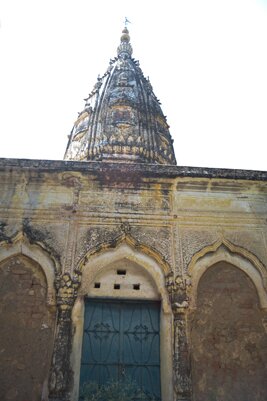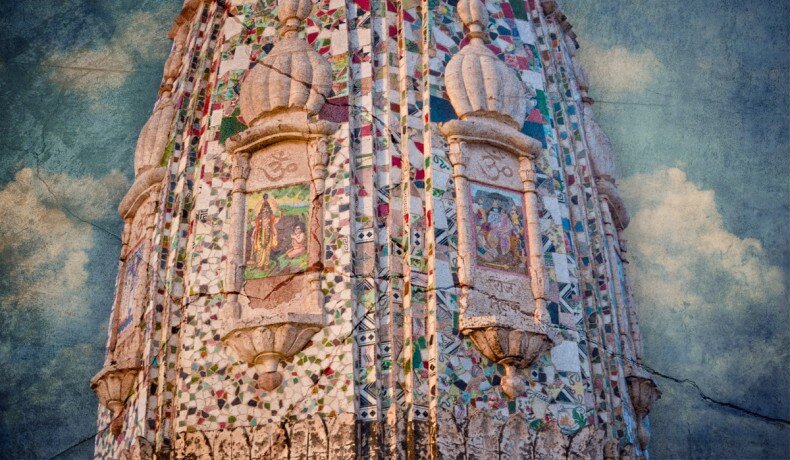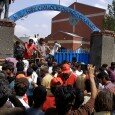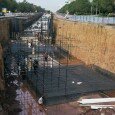By Haroon Janjua –
Preserve these fascinating sites before it is too late
I have a profound fascination with the ruins of the past, temples and pre-partition land- marks of architecture. Ever since exploring the partition narratives in Rawalpindi my obsession to unveil more about the rotting ranges of the Punjab has evoked curiosity.
 During Maharaja Ranjit Singh’s reign Kahuta was part of Poonch but after his death the British captured Punjab and sold Jammu and Kashmir to Dogras of Poonch and Kahuta was merged with Rawalpindi District.
During Maharaja Ranjit Singh’s reign Kahuta was part of Poonch but after his death the British captured Punjab and sold Jammu and Kashmir to Dogras of Poonch and Kahuta was merged with Rawalpindi District.
One of the magnificent pre-partition building in Kahuta, the two temples still reflecting the exquisitely relish architecture; standing elegantly amidst the vagaries of weather. The entire courtyards of both temples are covered by shops and houses build at their space with abundance of fruit trees.
Going through the main Kahuta bazar one can see the two temples standing tall amid the busy bazaars in Kahuta which are becoming narrow and shrinking from all sides by the newly sprung up expanding markets and houses. Once home to some 100 families used to worship from dawn to dusk during the British Raj, these temples are presently showing desolateness and silence in this small town. Today, looking into the depths of history there still exist the echoes of the people living at those places leaving one to still listen the bells in these temples.
The temple in the middle of the bazar was built in 1890 by Babu Sham Singh, as mentioned in the Jodh Singh Chawdhury’s Gurmukhi version book History of Kahuta. While another one in the Bohar Bazaar is still showing the glorified pre-partition architecture. Built by pandit Heera Nand, a rich Brahmin who owned lot of lands, gardens and a brick kiln in Kahuta, the weather conditions had not diminished its beauty even after 70 years.
“I still remember when Bohar bazar temple was built in 1942, and still the fine architecture of Sikh masons depicting deceitfulness” Said Syed Daud Shah, a local resident of Kahuta.
 These temples with wider prayer rooms and grounds have chipped at walls, and exemplary fine ashlars abandoned during the partition of India in 1947. Despite being under the control of Auqaf department, currently the properties of these temples are broadly covered by the local and migrated inhabitants of the area by building shops and houses.
These temples with wider prayer rooms and grounds have chipped at walls, and exemplary fine ashlars abandoned during the partition of India in 1947. Despite being under the control of Auqaf department, currently the properties of these temples are broadly covered by the local and migrated inhabitants of the area by building shops and houses.
“We migrated from Kashmir, and built a house at temple’s place after getting permission from Auqaf department in 1971,” said Shahzad Hussain, a migrated resident owning the major portion of the Babu Sham Singh temple.
 “It clearly shows that these temples belongs to Hinduism and reminds us of the glorious history of our forefathers. Just shutting the eyes like a pigeon won’t make us Arabs. We share our blood and history with Indians and it is they who are our brothers. The only way both countries can attain real prosperity is through promoting shared values,” told an oral historian in Kahuta Masood Akhtar Janjua.
“It clearly shows that these temples belongs to Hinduism and reminds us of the glorious history of our forefathers. Just shutting the eyes like a pigeon won’t make us Arabs. We share our blood and history with Indians and it is they who are our brothers. The only way both countries can attain real prosperity is through promoting shared values,” told an oral historian in Kahuta Masood Akhtar Janjua.
“We want to protect all such small temples but our functions are only limited to big and functional temples and such small properties are getting occupied and losing spaces,” said Afzal Khan, Deputy Director Punjab Archaeology Department.
It is high time that the government took up the renovation and preservation of these temples and respective departments should be provided with funds from the government to preserve these fascinating pieces of architecture.
![]() The writer is a free lance journalist based in Islamabad. He tweets @JanjuaHaroon
The writer is a free lance journalist based in Islamabad. He tweets @JanjuaHaroon






























































































